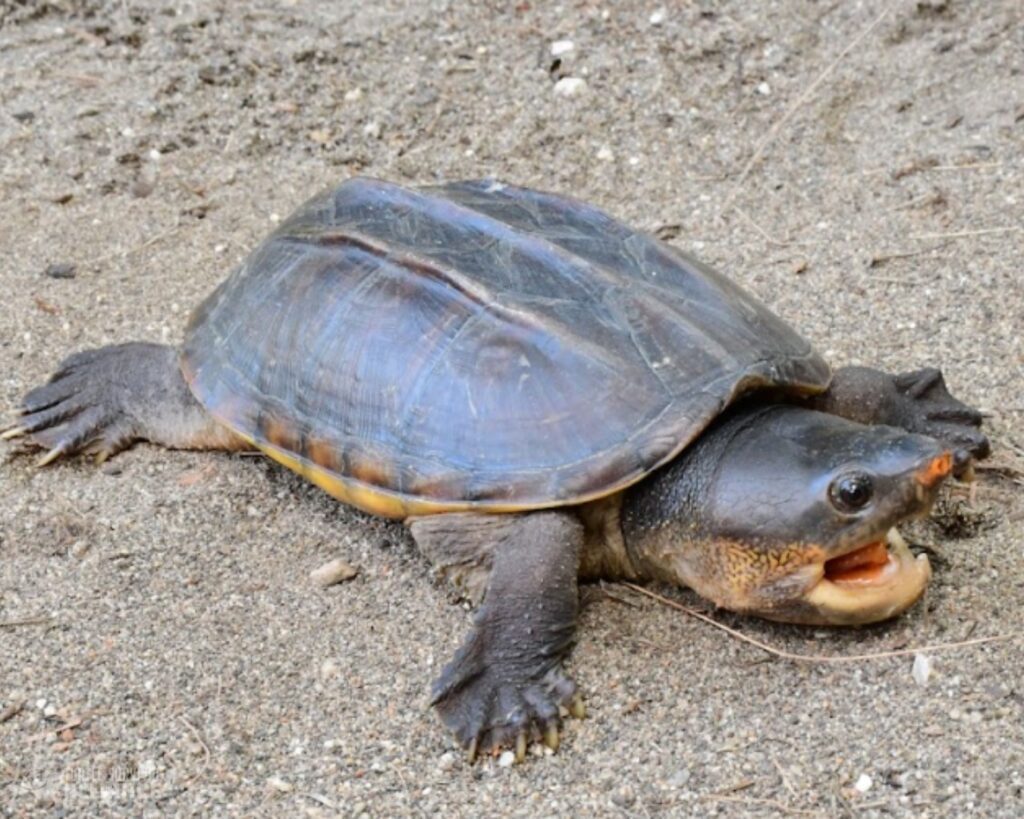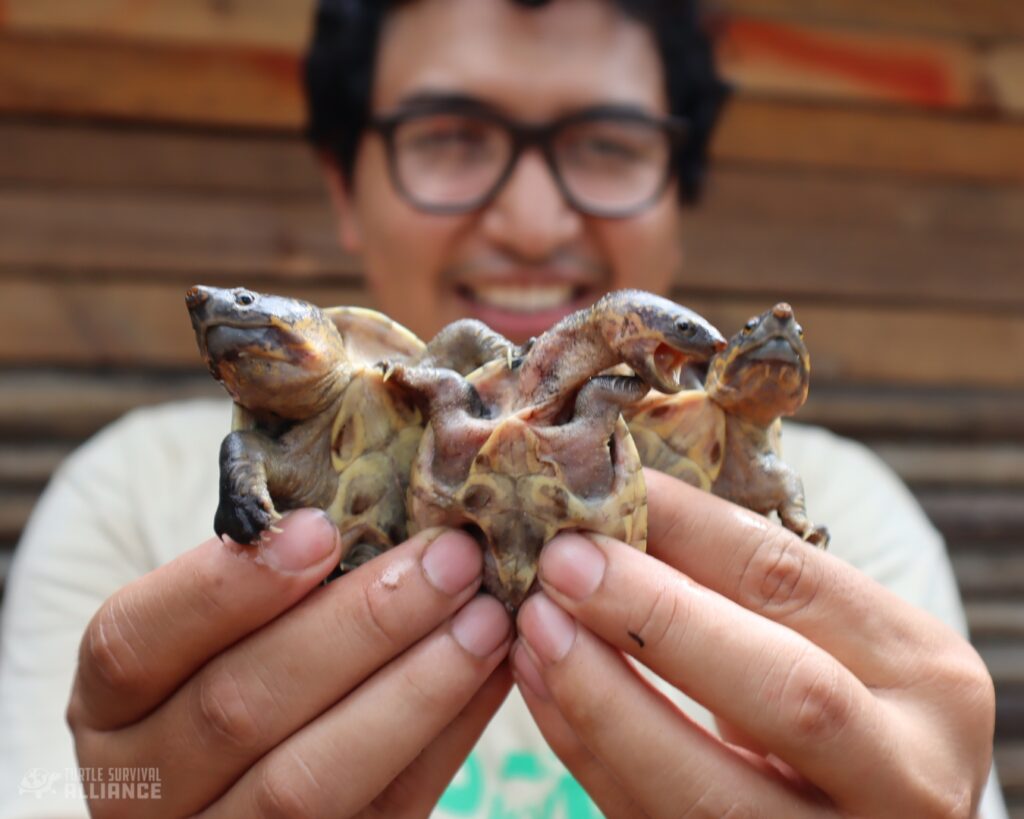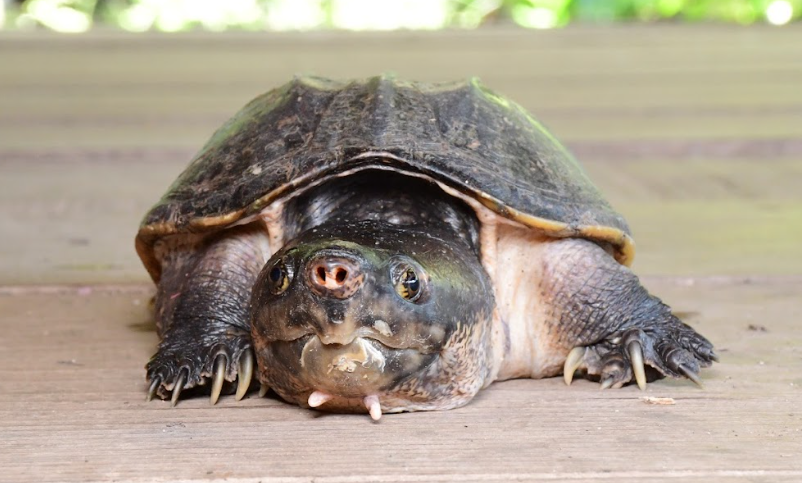This turtle is found in El Salvador, Guatemala, and Mexico–the second most turtle-rich country in the world. This musk turtle is larger than many other mud and musk turtles found in the region, averaging 6-8 inches in length, but can be up to 10 inches. It features a long carapace with three distinct ridges, or keels, and has a large pointed head and prominent jaws.
Due to habitat conversion, largely for cropland, livestock pastureland, logging operations, and tourism, and increasingly, poaching for the international pet trade, the many turtles and tortoises of Mexico are under threat. The Pacific Coast Musk Turtle population is decreasing, and recent assessment by the IUCN Red List will likely see their endangerment status uplisted to a greater threat level in 2024.

To combat this turtle’s decline, we support the work of biologists in Mexico to survey and monitor populations of this species and others, with the help of local communities. Environmental awareness campaigns and habitat protection advocacy are also key elements in the defense of this species.
To learn more about the plight of threatened turtles in Mexico and Central America, explore our Impact Report.

- Pictured: Pacific Coast Musk Turtle (Staurotypus salvinii)
- Countries of Origin: El Salvador, Guatemala, Mexico
- Habitat: Coastal freshwater lagoons, seasonal pools and lakes; narrow streams and rivers close to deltas in Pacific Coastal regions
- Wild Population: Decreasing throughout its distribution range; extirpated locally in some regions of the Mexican Pacific
- IUCN Red List Status: Near Threatened* *Likely to be uplisted in 2024 based on recent assessment
- Threats: Habitat destruction and alteration; collection for the food and pet trades
